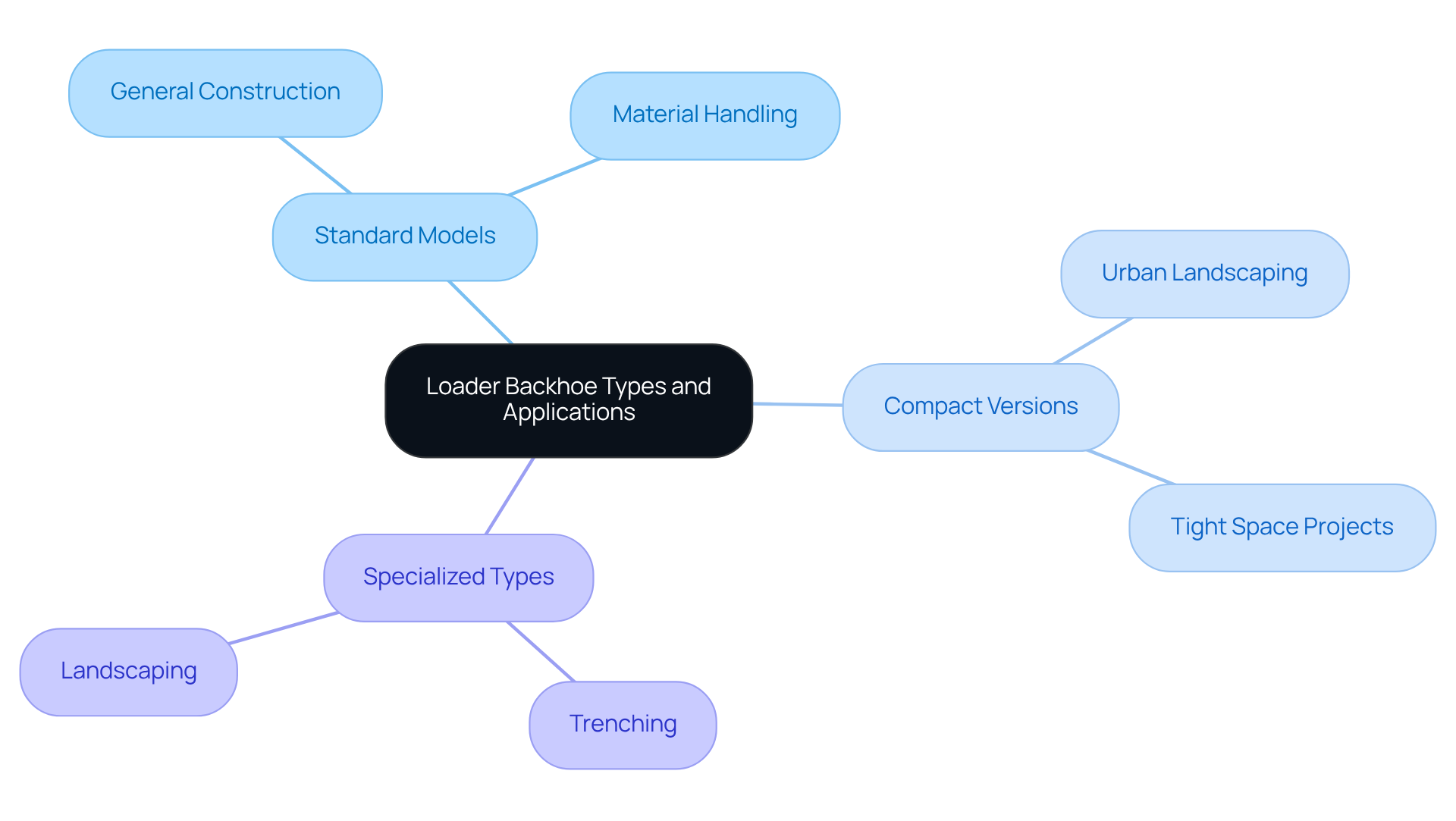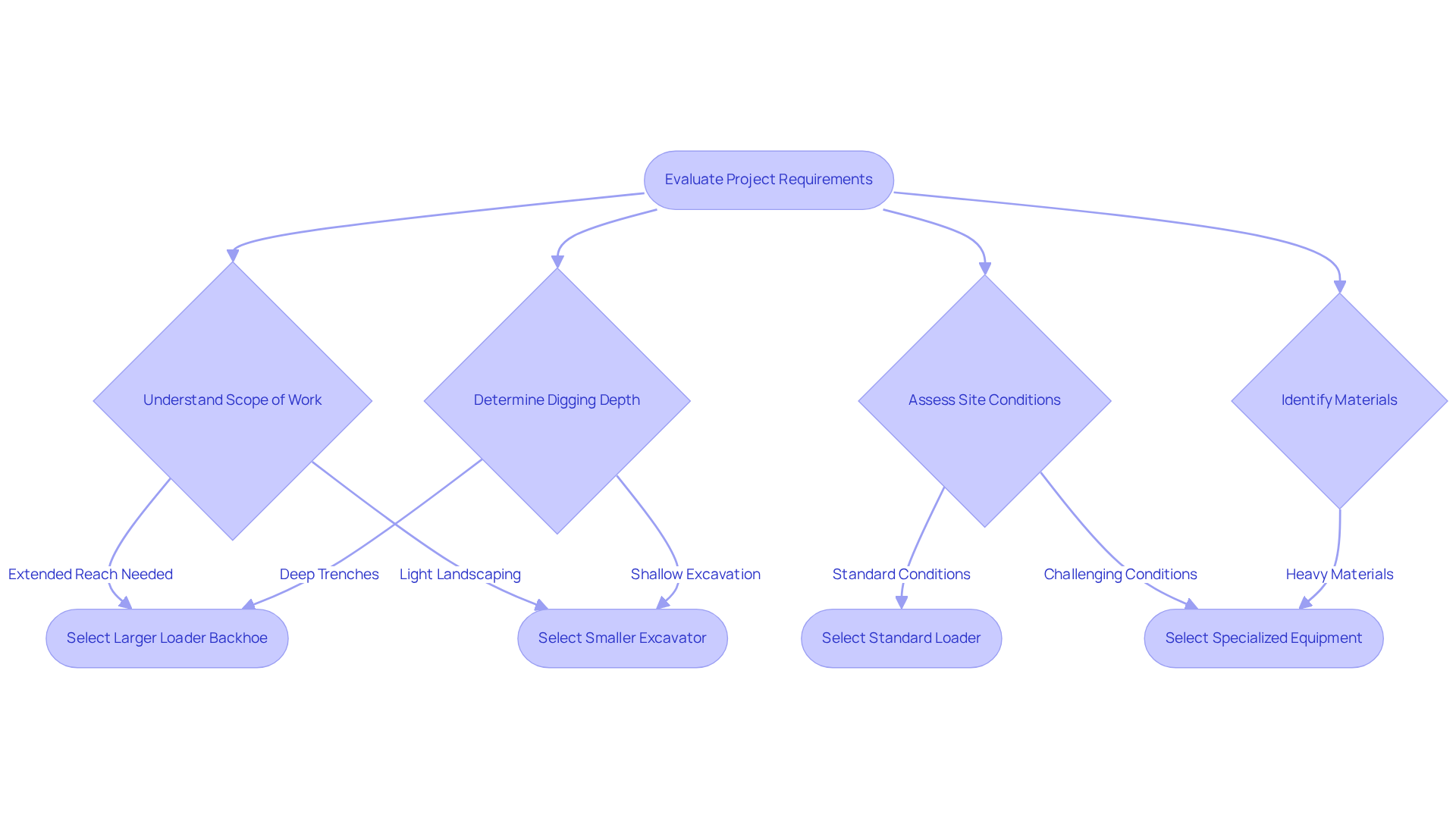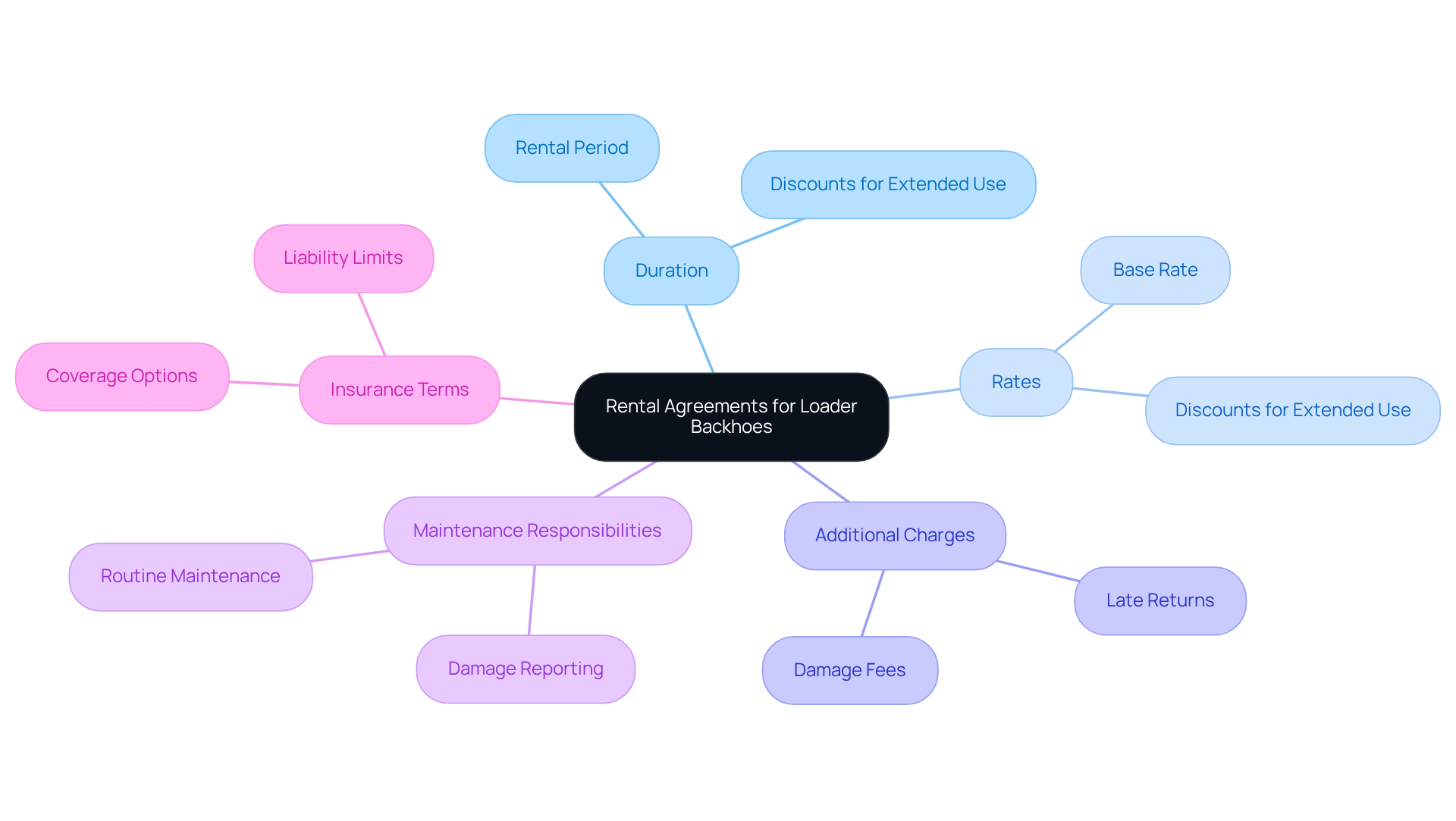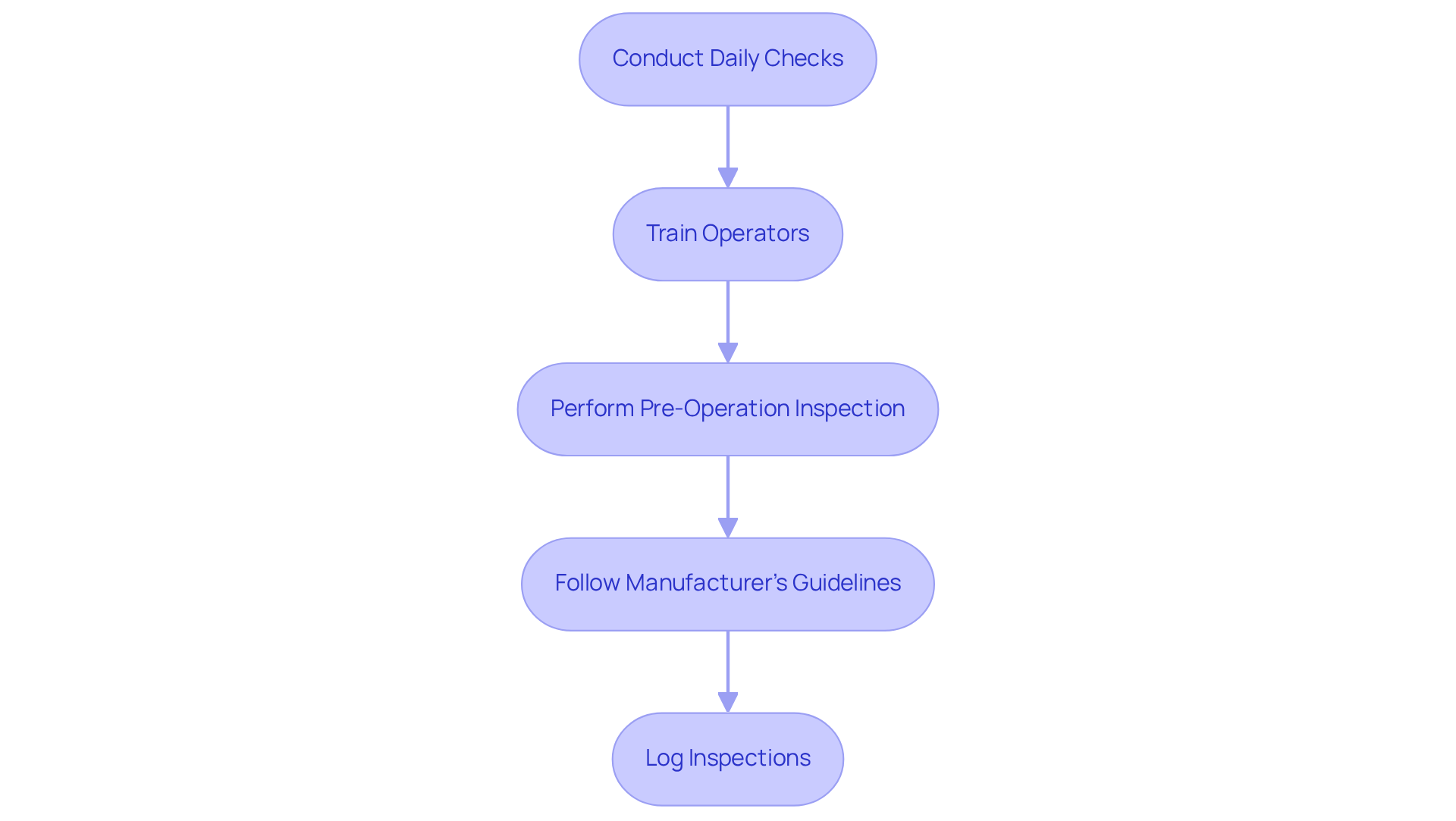Overview
Effective loader backhoe rental hinges on four key practices:
- Understanding the various types of loader excavators
- Evaluating project requirements
- Comprehending rental agreements
- Implementing maintenance protocols
Selecting the right equipment tailored to project needs significantly enhances efficiency. Moreover, a thorough understanding of rental terms helps prevent hidden costs, while regular maintenance is crucial for ensuring optimal performance. Collectively, these practices not only improve the rental experience but also lead to superior project outcomes.
Key Highlights:
- Loader excavators come in various types: standard, compact, and specialised, each suited for different tasks.
- Standard excavators are versatile for general construction, while compact versions are ideal for tight spaces.
- Assessing project requirements, such as area size and digging depth, is crucial for selecting the appropriate loader backhoe.
- Understanding rental agreements, including duration and additional charges, helps avoid hidden costs.
- Routine maintenance and inspections are essential for optimal performance and reliability of rented equipment.
- Clear communication with rental providers can enhance the rental experience and ensure cost-effectiveness.
Introduction
In the construction and landscaping sectors, the right equipment is crucial, and loader backhoes are essential for project success. Understanding the various types and applications of these machines is just the beginning; implementing effective rental practices can greatly enhance operational efficiency and cost-effectiveness.
With numerous options and considerations available, how can one ensure they are making the optimal choice for their specific needs? This article explores four key practices that can revolutionize the loader backhoe rental experience, guiding readers through the intricacies of:
- Selection
- Evaluation
- Agreements
- Maintenance
to maximize performance and value.
Understand Loader Backhoe Types and Applications
Loader excavators come in various types, including standard models, compact versions, and specialized types designed for specific functions. Standard excavators are known for their versatility and are commonly used for excavation, loading, and material handling. In contrast, compact excavators excel in smaller projects or tight spaces, while specialized variants may feature capabilities tailored for tasks such as trenching or landscaping. Understanding these distinctions allows managers to select the most suitable excavator for their specific needs, ensuring optimal performance in essential tasks.
For example, a standard excavator is typically ideal for general construction tasks, whereas a compact version is essential for urban landscaping efforts where space is limited. Familiarity with the capabilities and limitations of each type can significantly impact project outcomes and resource allocation. By choosing the right equipment, you not only enhance efficiency but also drive better results in your operations.
Take action today to explore our extensive range of loader backhoe rental options. Whether you need a standard model for construction or a compact version for landscaping, our loader backhoe rental service has the right solution to meet your requirements. Trust in our expertise to guide you in selecting the perfect equipment that aligns with your project objectives.

Evaluate Project Requirements and Select the Right Loader Backhoe
Before renting a loader excavator, it is crucial to assess the specific needs of the assignment. This includes understanding the scope of work, site conditions, and the types of activities to be performed. Considerations such as the size of the area to be excavated, the required digging depth, and the materials being handled are all essential factors.
For instance, if the project involves excavating deep trenches for utility lines, a machine with an extended reach and increased digging depth is indispensable. Conversely, for lighter landscaping tasks, a smaller, more maneuverable excavator may be adequate. By aligning equipment selection with project requirements, contractors can significantly enhance performance while minimizing excessive leasing costs.
In summary, a thorough evaluation of project needs not only ensures the right equipment is chosen but also maximizes efficiency and cost-effectiveness in the rental process.

Comprehend Rental Agreements and Terms for Cost-Effectiveness
When considering a loader backhoe rental, it is essential to meticulously examine the agreement, focusing on critical aspects such as duration, rates, and any additional charges. Understanding the leasing terms can help prevent hidden expenses that may arise from late returns, damage, or maintenance responsibilities.
For example, many leasing firms offer discounts for extended usage durations, which can significantly reduce overall costs. Furthermore, being aware of the terms related to maintenance and insurance allows renters to prepare adequately and avoid unexpected expenses. Clear communication with the loader backhoe rental company regarding these terms can lead to a more favorable rental experience.
In addition, comprehending these details empowers renters to make informed decisions, ensuring they maximize the value of their rental. Engaging with the rental provider about any uncertainties can foster a collaborative relationship, enhancing the overall satisfaction of the rental process.

Implement Maintenance and Inspection Protocols for Optimal Performance
To ensure optimal performance of a rented loader excavator, establishing a routine maintenance and inspection schedule is essential. Daily checks of fluid levels, tire pressures, and overall equipment condition must be conducted before operation. Furthermore, operators should be trained to recognize signs of wear or malfunction, enabling timely interventions.
For example, conducting a pre-operation inspection can identify potential issues that might lead to costly downtime. Adhering to the manufacturer's maintenance guidelines and maintaining a log of inspections will further enhance the equipment's reliability. By prioritizing maintenance, contractors can ensure that the backhoe performs at its best, significantly contributing to the overall success of the project.

Conclusion
Understanding the intricacies of loader backhoe rental is essential for maximizing efficiency and minimizing costs in construction and landscaping projects. Familiarizing oneself with the various types of loader backhoes, evaluating project requirements, comprehending rental agreements, and implementing rigorous maintenance protocols are crucial steps to ensure the selection of the right equipment for specific needs.
This article highlights four key practices:
- Recognizing the different loader backhoe types and their applications
- Assessing project requirements for appropriate equipment selection
- Understanding rental agreements to avoid hidden costs
- Establishing maintenance protocols to ensure optimal performance
Each of these practices plays a vital role in enhancing operational efficiency and driving project success.
Ultimately, effective loader backhoe rental transcends merely choosing the right machine; it revolves around making informed decisions that align with project goals. By prioritizing these best practices, contractors and managers can streamline operations, reduce unnecessary expenses, and ensure timely project completion within budget. Embracing these strategies will lead to a more productive and cost-effective rental experience, paving the way for successful project outcomes.
Frequently Asked Questions
What are the main types of loader backhoes?
The main types of loader backhoes include standard models, compact versions, and specialized types designed for specific functions.
What are the applications of standard excavators?
Standard excavators are versatile and commonly used for excavation, loading, and material handling in general construction tasks.
When should a compact excavator be used?
A compact excavator is ideal for smaller projects or tight spaces, such as urban landscaping efforts where space is limited.
What are specialized loader backhoes used for?
Specialized loader backhoes may feature capabilities tailored for specific tasks such as trenching or landscaping.
How can understanding the types of loader backhoes impact project outcomes?
Familiarity with the capabilities and limitations of each type can significantly impact project outcomes and resource allocation, enhancing efficiency and driving better results.
What is the benefit of choosing the right equipment for a project?
Choosing the right equipment ensures optimal performance in essential tasks, enhances efficiency, and leads to better results in operations.
Where can I find loader backhoe rental options?
You can explore an extensive range of loader backhoe rental options through rental services that offer standard models for construction and compact versions for landscaping.




